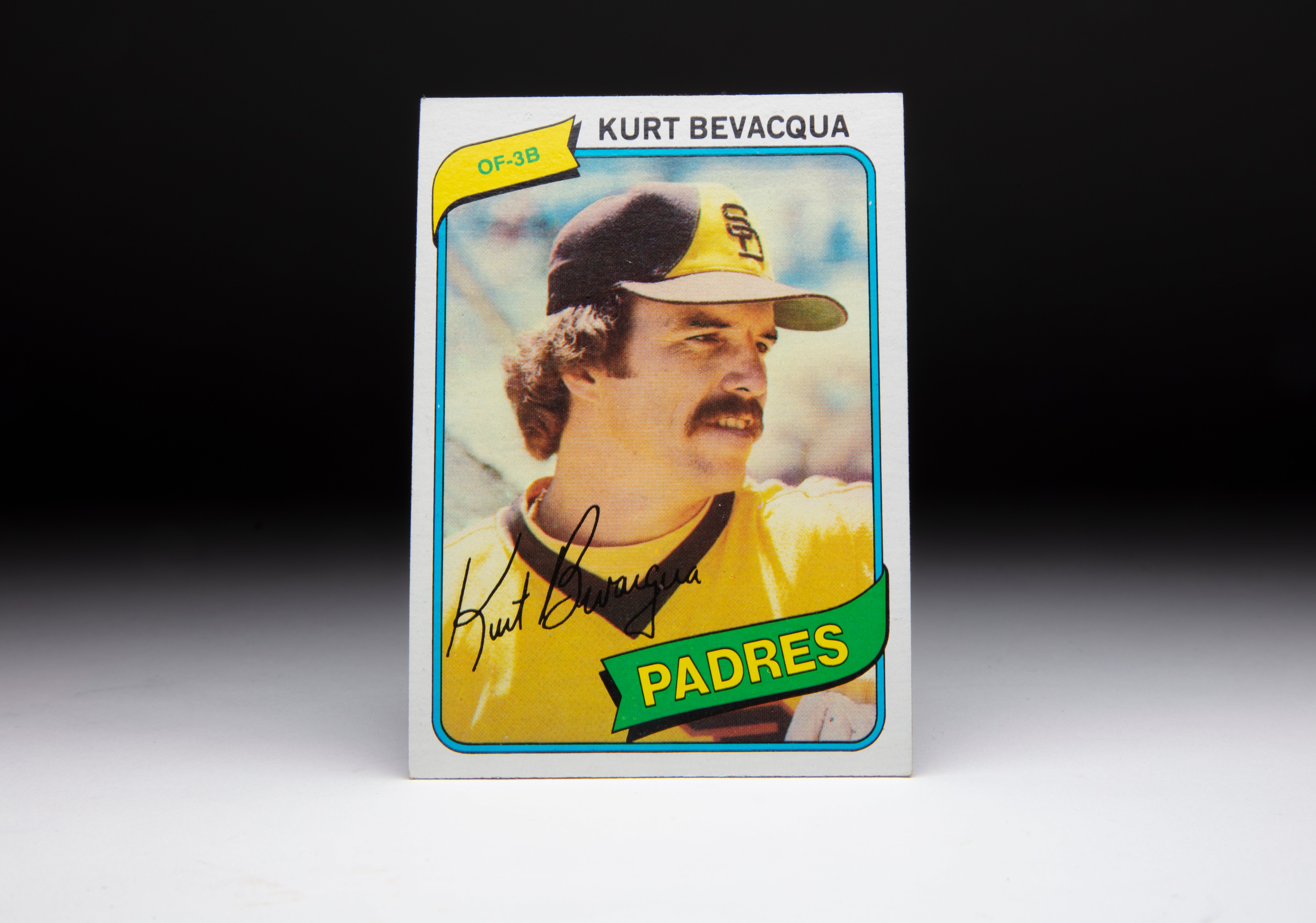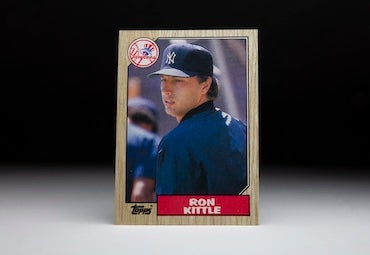- Home
- Our Stories
- #CardCorner: 1987 Donruss Benito Santiago
#CardCorner: 1987 Donruss Benito Santiago
Benito Santiago burst on the baseball scene like few have before or since, amassing a 34-game hitting streak during his rookie year of 1987 that saw him become one of the young faces of the game.
Santiago had staying power as well, eventually becoming just the seventh catcher (at the time of his last big league game) with at least 1,900 games caught.
It was a career path that took him from obscurity in his native Puerto Rico to the top of the baseball world.
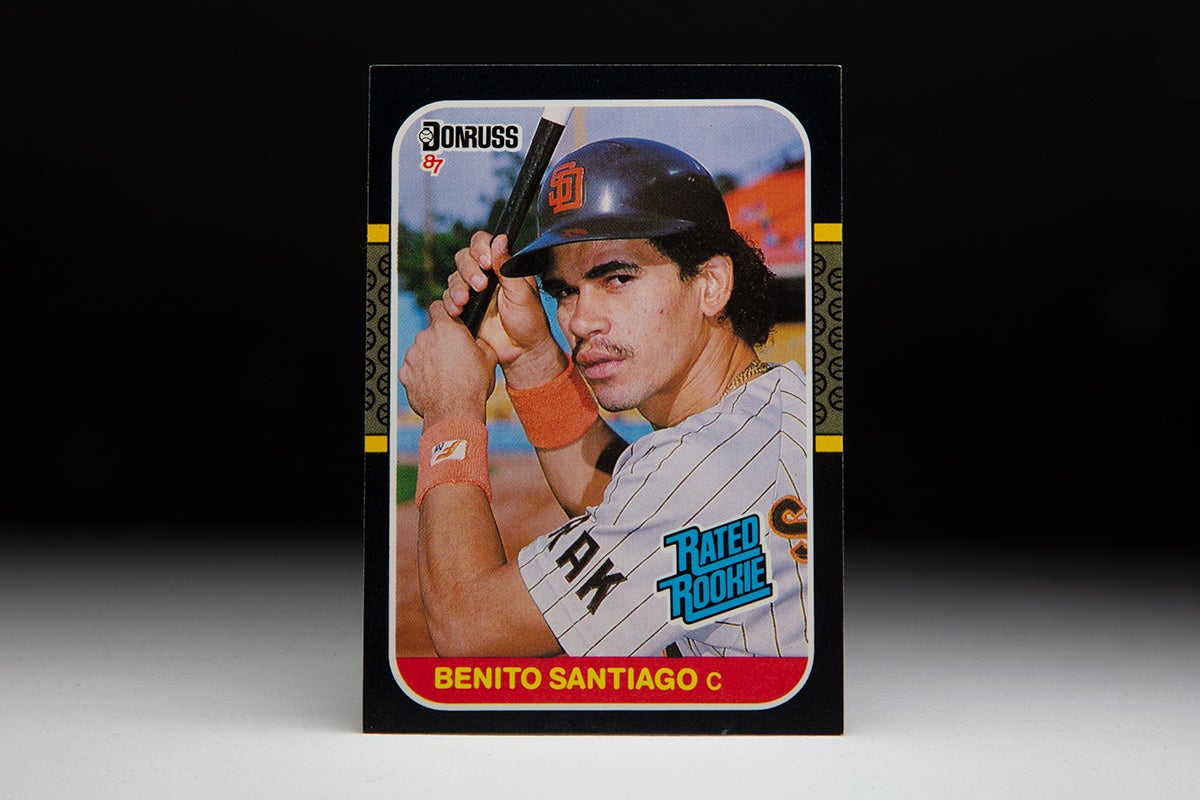
Born March 9, 1965, in Ponce, Puerto Rico, Santiago was just three months old when his father, a truck driver, died in a work-related accident. His mother, who already had six children, turned custody of Santiago over to relatives in Jauca, Puerto Rico, a town down Puerto Rico’s southern coast from Ponce.
Santiago was seven years old when he learned the details of his birth.
“They weren’t my real parents, so I didn’t know what to ask of them,” Santiago told the Los Angeles Times in 1989. “I had to do things on my own. I had to find out about things from the streets.”
Santiago attended John F. Kennedy High School in Santa Isabel, Puerto Rico, and his coach there was also a scout for the Padres. On Sept. 1, 1982, Santiago signed with San Diego as an international free agent.
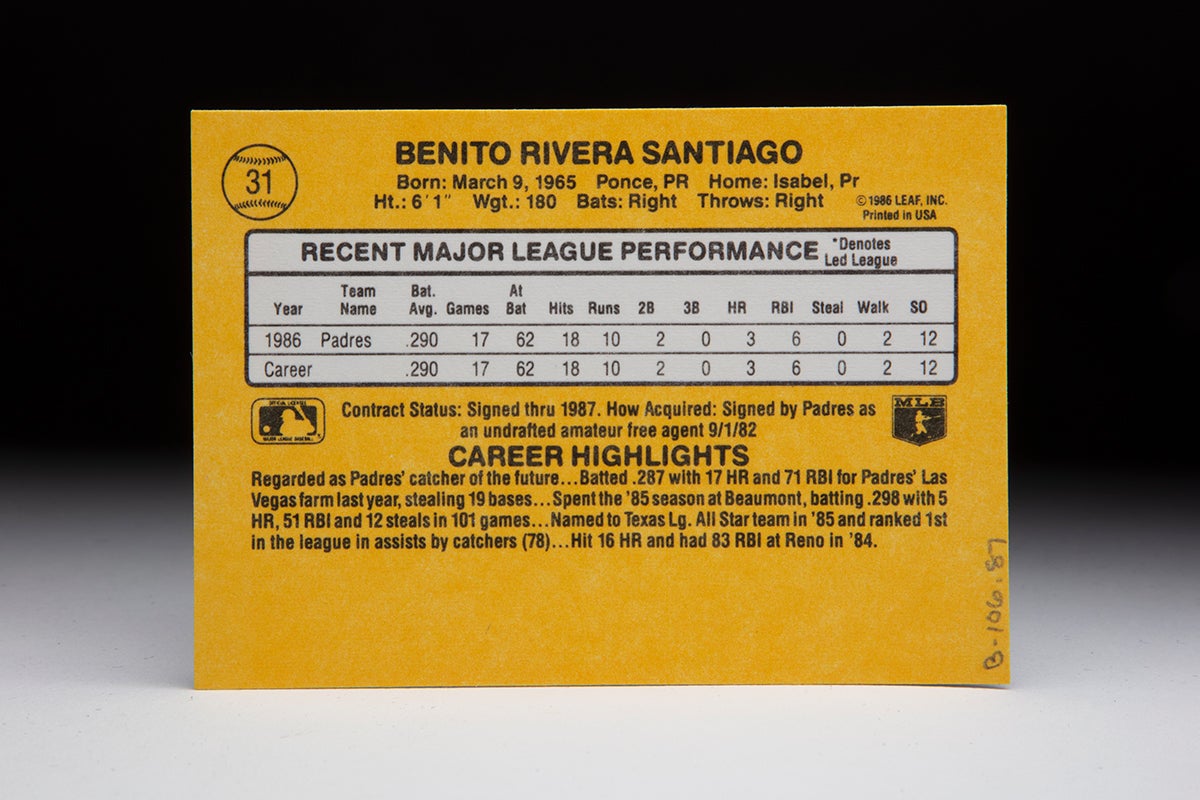
Debuting for Class A Miami of the Florida State League in 1983, Santiago hit .247 with 56 RBI in 122 games against competitors who were an average of four years older than he was. Santiago played for Class A Reno of the California League in 1984, hitting .279 with 16 homers and 86 RBI in 114 games.
That same year, fellow Puerto Rican Sandy Alomar Jr. made his pro debut with Spokane of the Northwest League. Very quickly, it became obvious that the Padres had two premium catching prospects who would soon make their way to the majors.
“Sandy Jr. is a good ballplayer but look at him, look at his family,” Santiago told the Los Angeles Times, referring to Alomar Jr.’s father, former big leaguer Sandy Alomar Sr. “He’s had it so much easier than me.”
Promoted to Double-A Beaumont in 1985, Santiago was named to the Texas League All-Star team and hit .298 in 101 games. He struggled at times with passed balls (16) and errors (15) but showed off his legendary arm strength – which would later be demonstrated in the majors when he would throw out runners from his knees – by recording 78 assists in 89 games behind the plate.
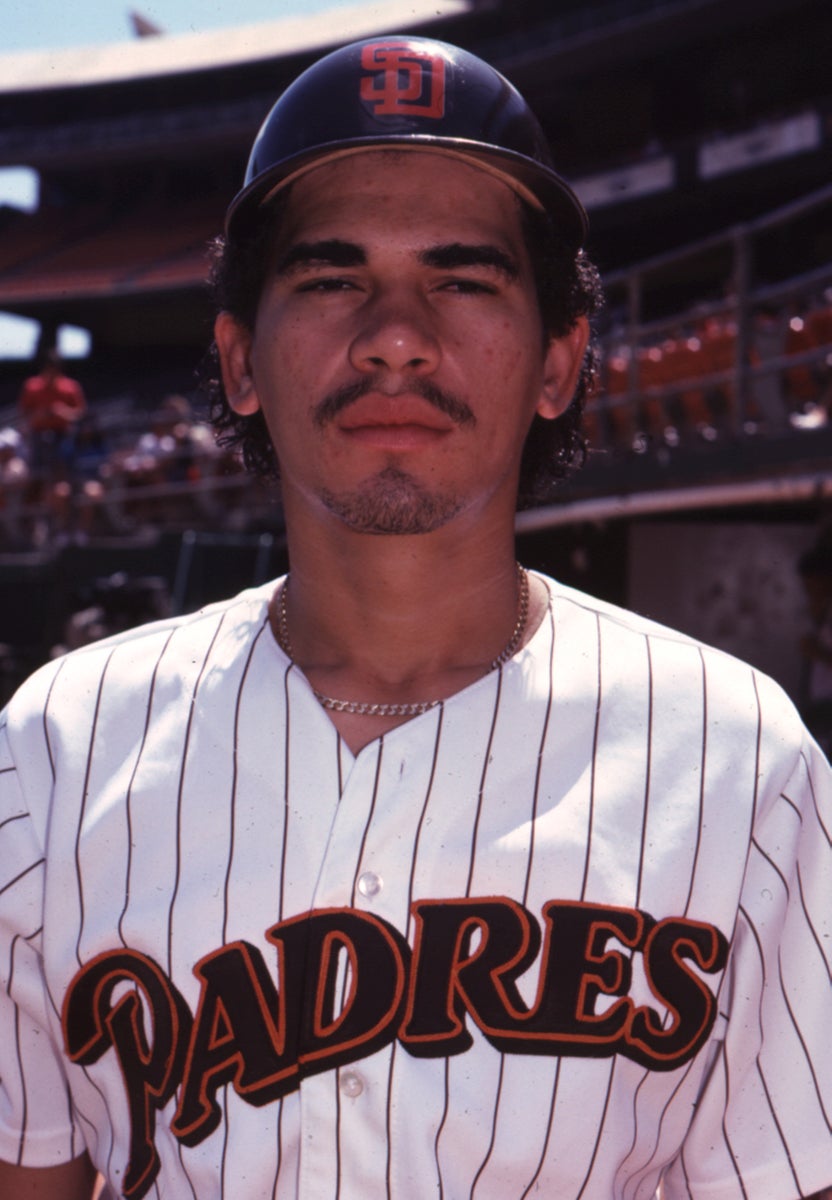
After spending most of the season with Triple-A Las Vegas in 1986, the Padres brought Santiago to the big leagues as a September call-up. He doubled in his first at-bat on Sept. 14 vs. Houston’s Mike Scott, who was on his way to winning the National League Cy Young Award. Santiago hit .290 over 17 games with the Padres, stamping himself as one of the game’s top young catchers.
Following the 1986 season, Padres general manager Jack McKeon traded veteran catcher Terry Kennedy to the Orioles, opening the starting spot for Santiago.
“I tried to go so hard right in the beginning,” Santiago told the Fort Lauderdale News following the 1987 season. “I tried to impress everybody. I made lots of mistakes, errors. When I went to home plate, I was swinging at any ball.”
The Padres also had a new manager, Larry Bowa, in 1987, and team was 15-46 on June 11 when things finally began to gel.
“Those two months were like one year for me,” Santiago said.
But despite the team’s struggles, Santiago looked like a seasoned veteran, hitting .302 as late as May 22 and keeping his average around .280 into late August. Then on Aug. 25, Santiago homered against Neal Heaton of the Expos in the third inning of a 5-1 San Diego win. It would be the first of 34 straight games where Santiago would hit safely, setting records for rookies and catchers along the way.
“I never thought I’d break those records in my life,” Santiago told the Fort Lauderdale News.
He finished the season batting .300 with 33 doubles, 18 homers, 79 RBI and 21 steals, earning a Silver Slugger Award. In the NL Rookie of the Year voting, Santiago received all 24 first-place votes to win in a landslide over runner-up Mike Dunne of the Pirates.
“I don’t think anyone else should even get a vote for first place,” McKeon told the Fort Lauderdale News prior to the election, citing Santiago’s defense as well as his production at the plate. “All the credit has to be given to Santiago because he made the adjustment and became a better defensive player.”
Santiago’s hitting declined in 1988 as he hit .248 with 10 homers and 46 RBI in a season where offense was down throughout the game compared to the previous year. But his defense improved markedly as he cut his errors from 22 to 12 and led all NL catchers by throwing out 44.7 percent of runners trying to steal.
Following the season, Santiago won the first of three straight Gold Glove Awards and also won another Silver Slugger Award.
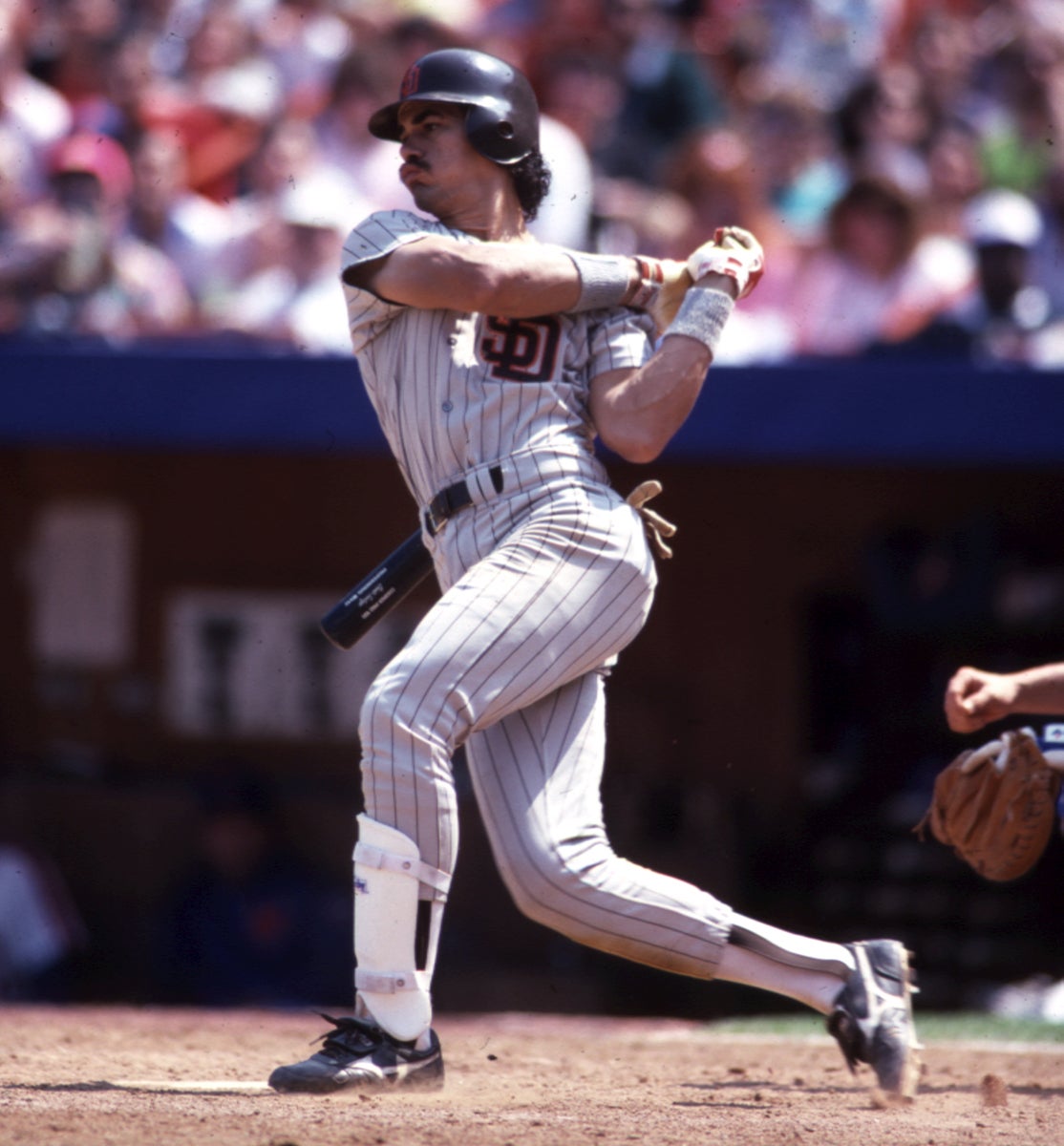
In 1989, Santiago was named to his first All-Star Game while hitting .236 with 16 homers and 62 RBI. Following that season, the Padres dipped into their catching surplus and traded Alomar Jr. – who spent the 1988 and 1989 seasons battering Triple-A pitching – to Cleveland with Carlos Baerga and Chris James in exchange for star outfielder Joe Carter.
Santiago skipped winter ball heading into the 1990 campaign and came out swinging a hot bat, hitting .397 through April. He kept his average above the .300 mark for most of the season – despite missing almost two months with a broken hand – until a September slump saw him finish at .270 with 11 homers and 53 RBI in 100 games. Santiago earned his second All-Star Game selection, a third Gold Glove Award, a third Silver Slugger Award and some support in the NL Most Valuable Player voting.
Arbitration-eligible for the first time, Santiago and agent Scott Boras asked for a four-year deal worth $16 million. The Padres offered about $5 million less, and when the parties could not agree Santiago opted to go to arbitration and submitted a figure of $2.5 million. The arbitrator sided with the Padres’ offer of $1.65 million.
Santiago was widely reported as saying he was now committed to exploring the free agent market when he became eligible following the 1992 campaign. Appearing in 155 games in 1991 – including 151 at catcher – Santiago hit .267 with 17 homers and 87 RBI while leading NL catchers in assists with 100.
“There has not been a catcher hit the free agent market in modern times that has his skill level,” Boras told the Associated Press when it reported that the Padres were interested in talking about a long-term contract with Santiago following the 1991 season. “They may find that our proposal (following the 1990 season) was a deal compared to what the Padres are going to have to pay him now.”

Heading to arbitration again prior to the 1992 season, Santiago asked for $3.3 million and won his case. But the 1992 Padres suffered from cohesion issues and finished 82-80, with Santiago appearing in just 106 games due to a broken finger and hitting .251 with 10 homers and 42 RBI.
Named to his fourth-straight All-Star Game, Santiago was the subject of trade rumors throughout the summer. But teams were hesitant to offer the Padres top prospects because it was assumed that Santiago would enter the free agent market no matter where he was dealt. The Padres even put Santiago through waivers but no deal was forthcoming, and he wrapped up his stellar stint in San Diego with a pinch-hitting appearance in the team’s final game of the season.
On Dec. 16, 1992, Santiago signed a two-year deal with the expansion Florida Marlins worth $7.2 million – reportedly taking less money in order to play closer to his native Puerto Rico.
“I want to change all the reputation on me in the past,” Santiago told the Associated Press in his introductory news conference. “I want to work hard with the team so I can put this thing away.”
Santiago had a productive two seasons with the Marlins, hitting the first home run in franchise history (in the team’s seventh game) and batting .248 with 24 homers and 91 RBI over 240 games. But with highly touted catching prospect Charles Johnson debuting in 1994, the Marlins declined to bring back Santiago in 1995.
Thus began a stretch where Santiago played for five teams in a six-year period, including two stints with the Reds. He helped Cincinnati win the NL Central in 1995, hitting .286 with 11 homers and 44 RBI in 81 games while leading all NL catchers with a .996 fielding percentage. He also appeared in the postseason for the first time, hitting .333 with a homer, three RBI and three walks while starting all three games in Cincinnati’s sweep of the Dodgers in the NLDS. Santiago also started all four games in the NLCS as the Reds were swept by the Braves, hitting .231 while drawing two more walks.
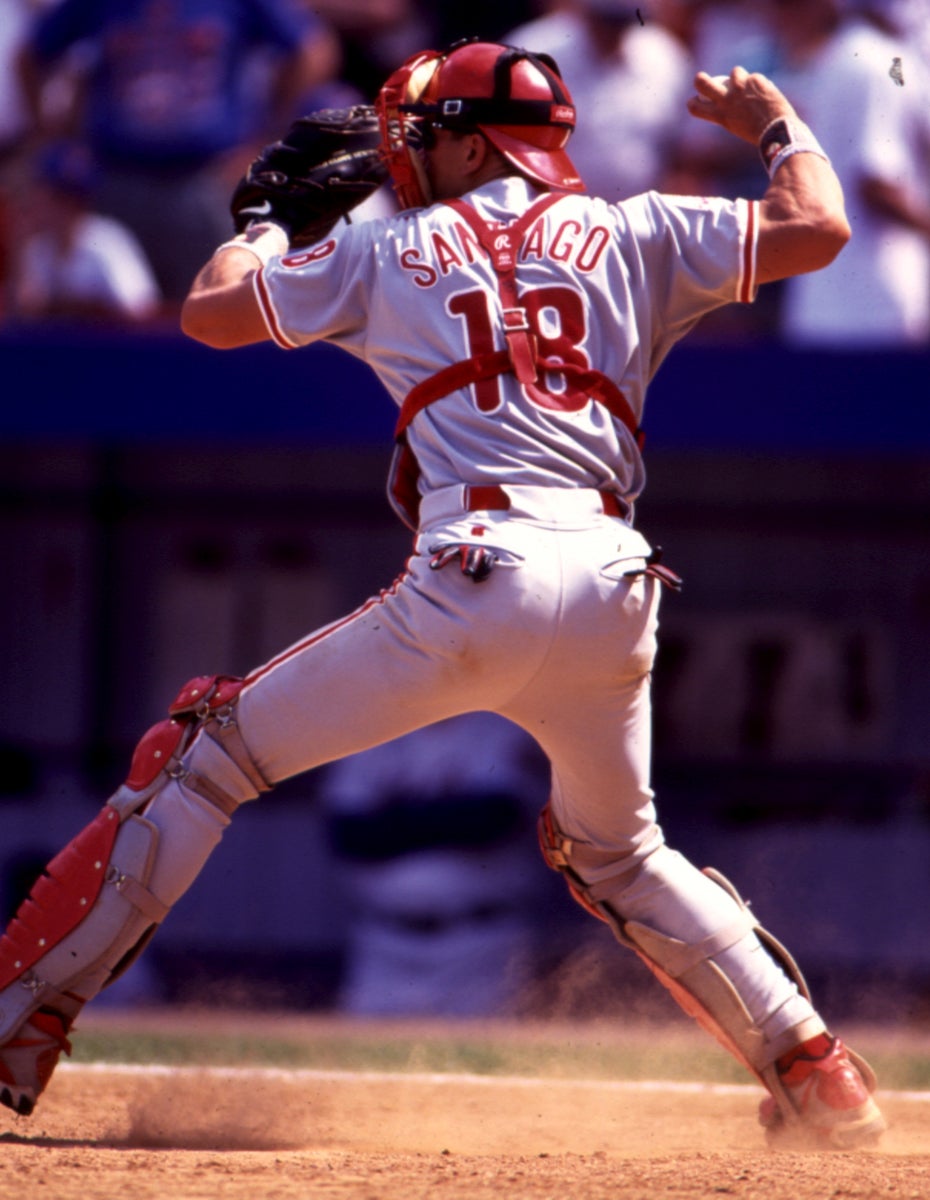
A free agent again, Santiago asked the Reds for $4.8 million over two years but was turned down. On Jan. 30, 1996, he signed a one-year, $1.1 million deal with the Phillies.
“I heard a lot about his makeup, and we questioned that before we signed him,” Reds general manager Jim Bowden told the Philadelphia Inquirer after Santiago signed with the Phillies. “But I thought he played hard every day. He can shut down a running game by himself.”
Santiago gave the Phillies their money’s worth and much more in 1996, hitting a career-high 30 home runs to go along with 85 RBI and a .264 batting average in 136 games. With that resume, Santiago did much better in his next foray into free agency, signing a two-year deal with the Blue Jays worth a reported $7 million on Dec. 9, 1996.
“I was underpaid for two seasons,” Santiago told the South Florida Sun Sentinel in the spring of 1997. “I don’t want to talk about that.
“I picked a good time to have a big year.”
But Santiago struggled in 1997, hitting .243 with 13 homers and 42 RBI in 97 games. Then in January of 1998, Santiago was injured when his car struck a tree, a crash that left him with right knee ligament damage. He would not play in a big league game until September and appeared in just 15 games.
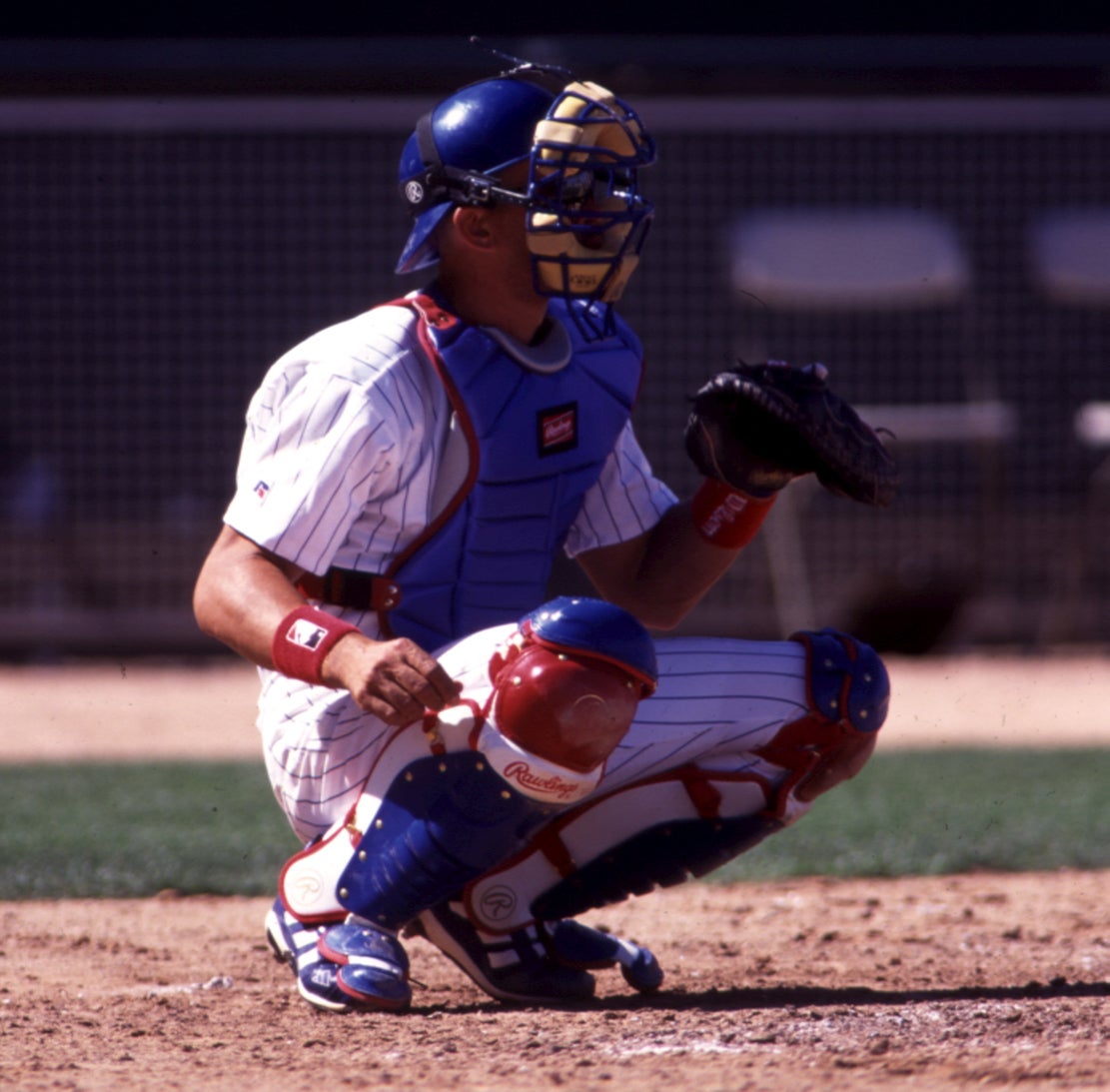
Santiago signed a one-year deal with the Cubs and hit .249 with seven homers in 109 games in 1999. He then returned to the Reds in 2000, batting .262 with eight homers and 45 RBI in 89 games.
Entering his age-36 season, Santiago appeared to be destined for a backup role. But after signing with the Giants toward the end of Spring Training in 2001, Santiago fashioned a career resurgence. He appeared in 133 games that year, batting .262 with 25 doubles while witnessing Barry Bonds’ historic 73-home run season. Santiago’s defense was also as strong as ever.
“Hey man, I can still throw from my knees,” Santiago told the Oakland Tribune. “Getting up (to throw) or staying down. I’m going to get you out.”
Then in 2002, Santiago – after signing a two-year deal worth $3.7 million – helped the Giants to a Wild Card berth by batting .278 with 16 homers and 74 RBI in 126 games. Hitting in the No. 5 hole – right after Bonds – for much of the season, Santiago repeatedly came through with the game on the line and was named to his first All-Star Game in 10 years while placing 20th in the NL MVP voting.
In postseason play, Santiago drove in five runs in San Francisco’s five-game victory over the Braves in the NLDS. He was even better in the NLCS vs. the Cardinals, hitting .300 with two homers and six RBI. The Giants advanced to the World Series against the Angels, setting up a matchup between two teams who were underdogs to advance that far.
“We know what we’ve got to do to win this series,” Santiago said. “We’ve got to keep that Rally Monkey down.”
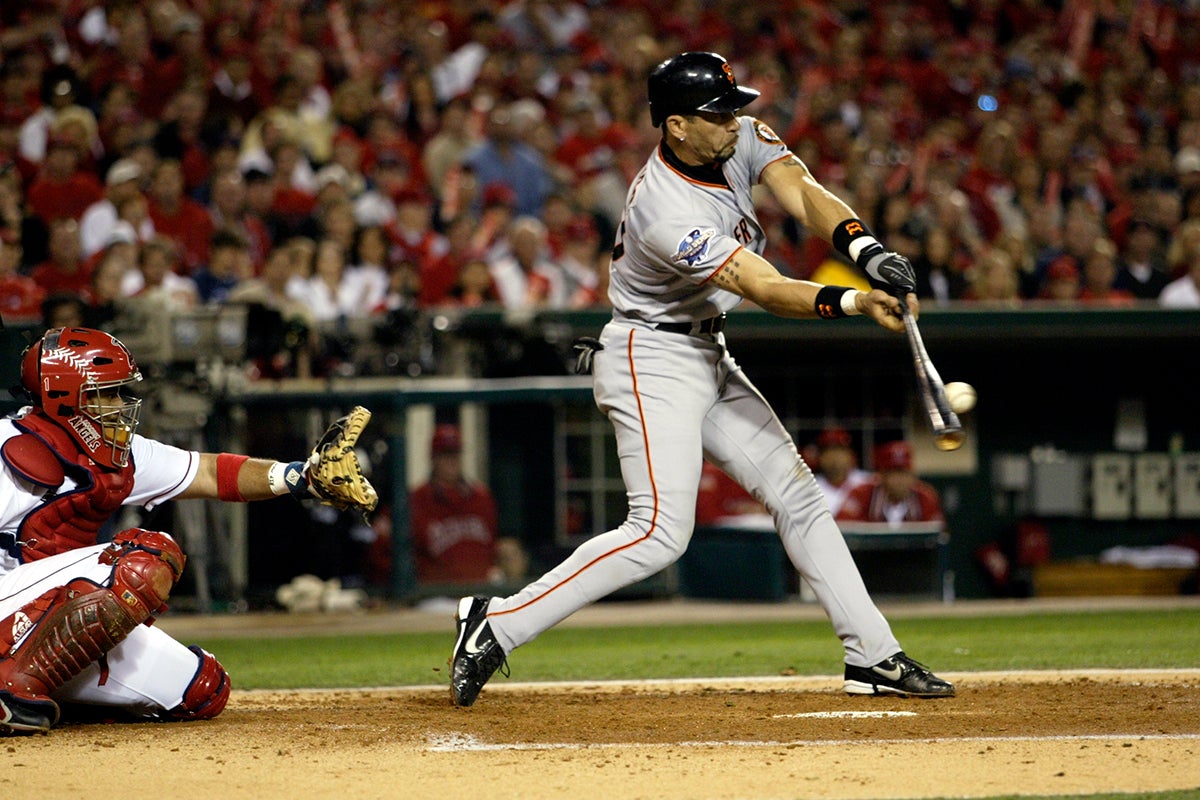
Referring to the mascot that seemed to propel Angels comebacks, Santiago and the Giants seemed to have the Rally Monkey in check when they led Game 6 by a score of 5-0 heading into the bottom of the seventh, needing only nine outs for the championship. But the Angels mounted another rally, scoring three in the seventh and three in the eighth to win 6-5 and force Game 7.
Santiago had two singles and a walk in the deciding game, scoring San Francisco’s only run in a 4-1 loss. Santiago batted .231 with five RBI in the seven games as Bonds drew 13 walks, seven of them intentional.
The Giants won 100 games in 2003 to return to the postseason as Santiago hit .279 with 11 homers in 108 games. But the Marlins eliminated San Francisco in the NLDS as Santiago played in the final four postseason games of his career.
With his contract expiring again, Santiago signed a two-year, $4.3 million contract with the Royals on Dec. 11, 2003.
Entering his age-39 season, Santiago felt ready to handle a starting job.
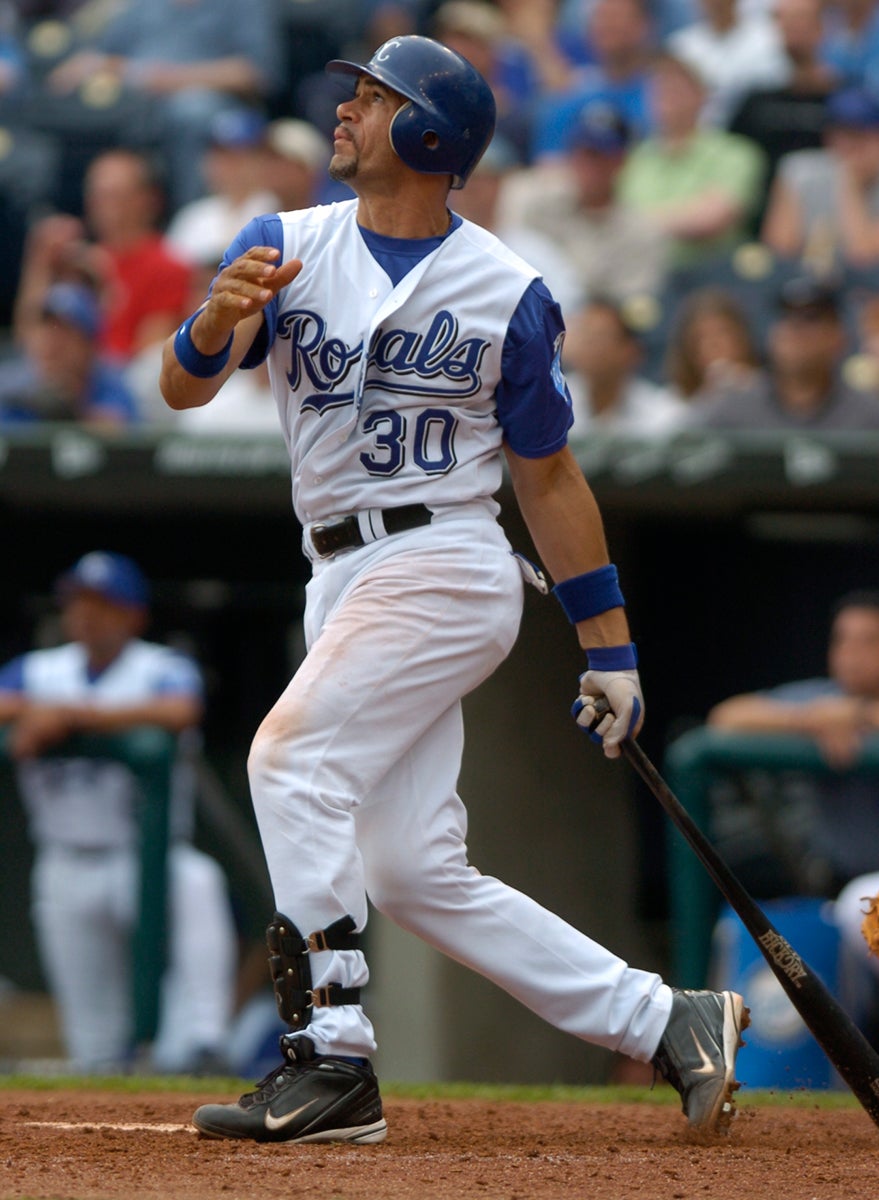
“I’ve got that age,” Santiago told the Kansas City Star. “But I feel young. I work hard. I take a lot of pride in being able to play every day.”
But Santiago was unable to play through a broken hand suffered when he was hit by a pitch on June 18 – an injury that ended his season after 49 games. Then on Dec. 16, the Royals traded Santiago to the Pirates in exchange for a minor leaguer named Leo Nuñez, who went on to become a successful big league reliever and was later known by the name Juan Carlos Oviedo.
Santiago, meanwhile, played in six games for the Pirates in 2005 before being released on May 8, a move that ended his big league career.
Santiago was later implicated in the 2007 Mitchell Report on performance enhancing drugs in baseball. But by that time, his playing days were over.
In 20 big league seasons, Santiago compiled a .263 batting average, 1,830 hits, 323 doubles, 217 home runs and 920 RBI. From humble beginnings to the top of the mountain, Santiago experienced everything baseball had to offer.
“Nobody understands how tough it is for me,” Santiago told the Los Angeles Times in 1989. “They think it’s all being a star. They don’t see it here (in the Puerto Rican neighborhood where he grew up). They don’t see where I lived, where I come from.
“One day I’ll write a book. No one will believe that book, but I’ll write it, anyway.”
Craig Muder is the director of communications for the National Baseball Hall of Fame and Museum

